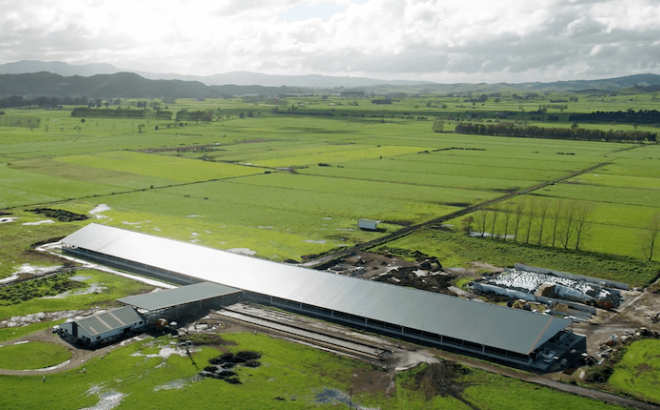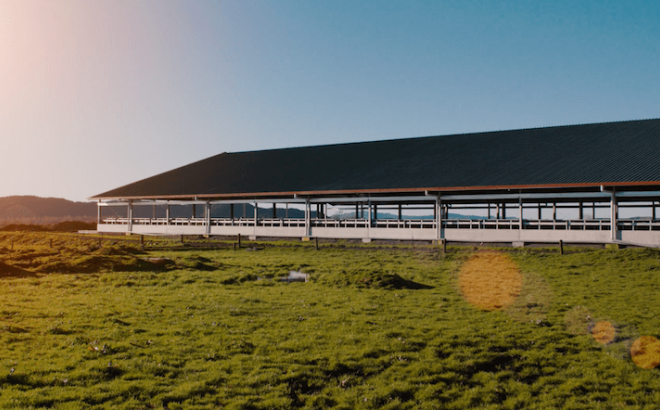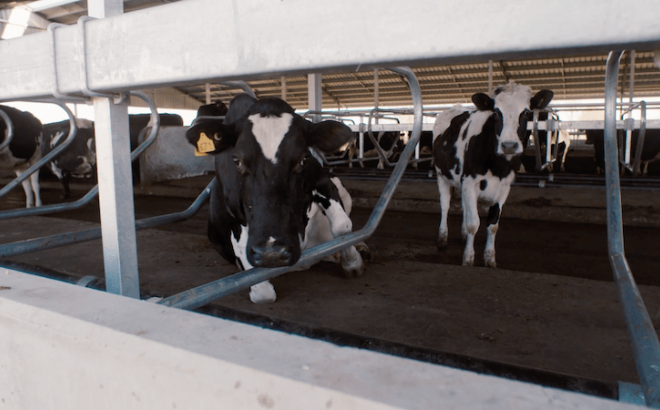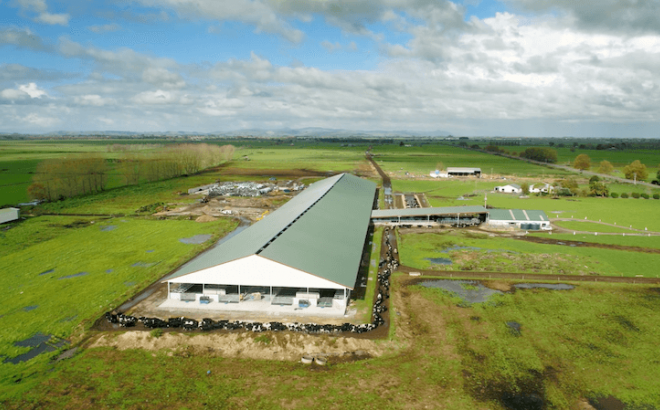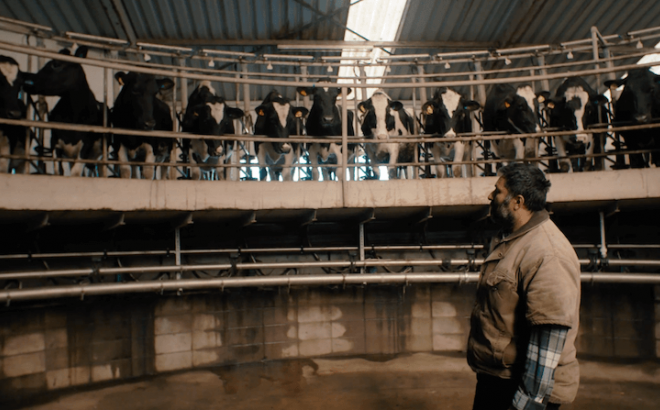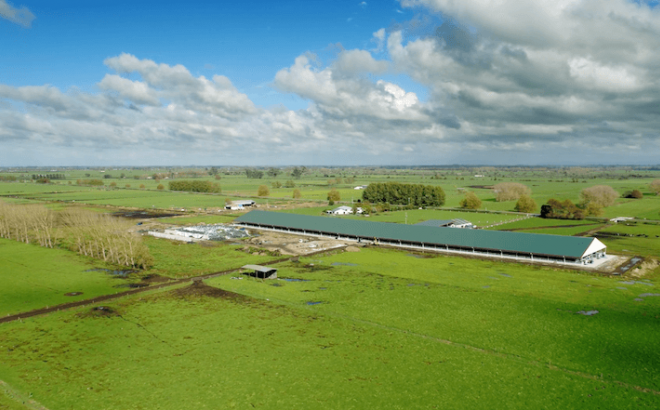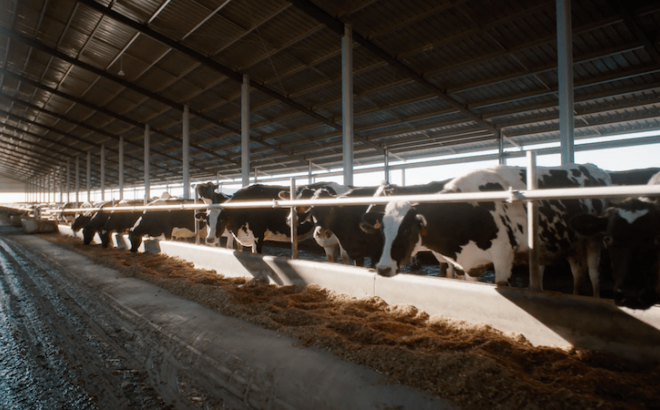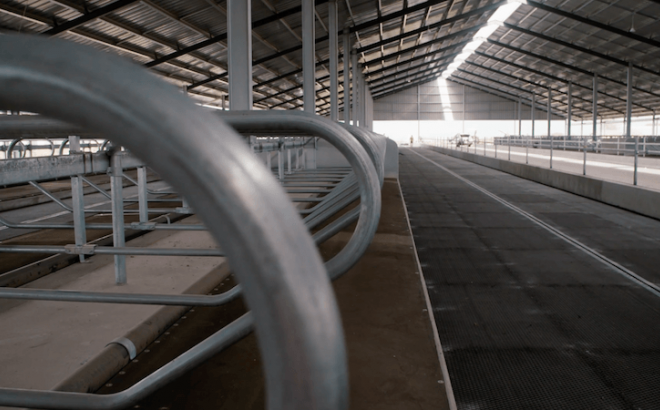THE LONGEST DAIRY BARN IN THE WAIKATO
Posted: 29/10/2018 5:17pm
K & MK Singh Farms dairy barn
KEY STATS
Location: Gordonton, Waikato
Length: 245m
Width: 38.5m width (minimum)
Total: 9,625m2
PROJECT OVERVIEW AND OUTCOMES
In conjunction with GEA Farm Technologies, we undertook a design-build project to create a world-class dairy barn system for third generation Waikato dairy farmer, Aman Singh. Completed in April 2018, the Singh dairy barn shows how excellence in industrial design and construction leads to exceptionally happy dairy cows, and a significant lift in farm production.
The resulting 245 metre long barn and shift from a traditional pastoral grazing system to a ‘cut-and-carry’ feed system enabled a lift in on-farm cow numbers from 600 to 1,000, along with an impressive lift in per-cow output of 10-15%. This productivity increase has been achieved while also reducing environmental impacts, nitrogen loading, and de-stocking on the land itself.
DESIGN CHALLENGES
Dairy Barns are typically designed for three things: function, cost efficiency, and providing an operational benefit to the farm. This dairy barn is a category leader on all three fronts. But, because of Council planning concerns and visual impacts of the size and location of the building, the design had to be given close consideration to ensure minimal impact of the landscape whilst still providing a practical and functional building.
To meet Waikato Regional Council standards, the height of the barn structure was designed lower than would typically be the case; this was achieved by using an 18-degree pitched roof which allowed the barn to not intrude in the surrounding landscape.
CONSTRUCTION CHALLENGES
Work had to be sequenced to allow business as usual for the farm operations. Considerable thought and effort went into planning operations and construction timing to ensure the 600 cows were not spooked by activity, as they had to walk by the work site regularly for milking. Also, because the facility was built for animals, their annual breeding and milking cycles had to be considered and worked around. The project targeted a completion prior to calving to allow a customisation period for livestock inside the shed. This was achieved, and the cows moved in successfully.
During initial groundworks, severe peat ground conditions required the excavation of the entire site down to an average of 1.4m. 10,800m3 of peat-based soil was removed and replaced with compacted clay as pre-works by the client. However, the clay installed did not meet the desired compaction results and 600dia piles had to be consented and drilled under every portal leg to provide the required stability prior to the commencement of the main works.
KEY DESIGN ELEMENTS
- Central feed lanes provide 500 linear metres of access allowing every cow in the barn to eat at any time.
- Feed is pushed up to the animals via robotic FRone feed pusher set to 8 cycles over a 24hr period to maximise dietary efficiency.
- The building was divided into four sections to provide workability and ensure cows don’t crowd one area. This helps spread the cows to maintain the effectiveness of the feed lane system.
- To reduce lameness and impact on cows’ hoofs, a walkway lane area surrounds the feed lane with all floors constructed in concrete with 22mm rubber matting over areas where cows walk.
- Sanitation levels are maintained by an automated effluent scraping system. All effluent is captured and held to be distributed onto pasture after 90 days of storage.
- Three rows of cow bedding allows sufficient bedding for all cows and reduces the overall walking distance to the feeding area.
- Pre-cast concrete was specified as perimeter panels to provide shelter from the elements and a physical barrier to retain cows.
- Galvanised posts and legs were selected for the structure as normal uncoated steel would not meet long-term durability requirements.
- Coloursteel was chosen for its clean lines and appearance, durability, and longevity.
- The barn is linked to the existing milking shed by a 948m2 canopy that allows the cows to move from the barn to milking shed and return away from the stress of rain or sun.
- All stormwater is collected off the 11,000m2 roof area (new and existing buildings) into 30,000 Ltr storage bladder for further use on the farm.

